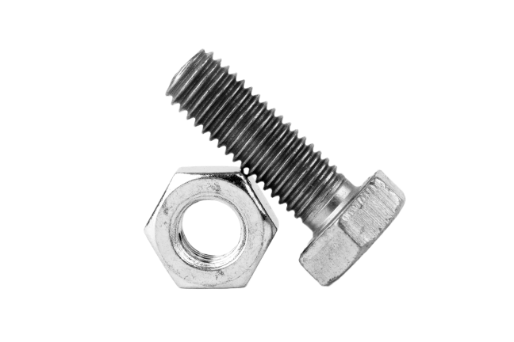
Picture framing a deck not only enhances its aesthetic appeal, it also increases its longevity by preventing water entry at the deck ends. This technique involves creating a visually distinct border, typically using contrasting colors or materials around the deck's perimeter. Fastener Systems screws are ideally suited for this precise and durable construction method and ensure that each deck board is securely fastened and perfectly aligned.
Design and Planning
Proper planning is crucial for achieving a flawless picture frame deck:
- The design phase should start with selecting the right materials that match the main deck area while also providing a striking contrast for the borders.
- It’s essential to consider the full layout of the deck to make sure that the frame complements other design elements like railings and stairs.
Ensuring that the deck frame is square is critical because it guarantees that all sides are parallel and that the corners will meet at precise 90-degree angles.
Materials and Tools Needed
The selection of deck materials can have a significant impact on both the aesthetics and longevity of the project. Here's a closer look at the different types of wood and composite materials typically used for decks, along with the best practices for fastening these materials using Fastener Systems screws:
Wood Decking Materials
Pressure-Treated Lumber
Pressure-treated lumber is widely used due to its resistance to rot and pests. Fastener Systems recommends using galvanized or stainless steel screws to prevent corrosion that can occur due to the chemicals in the wood.
Cedar and Redwood
Cedar and Redwood are both known for their natural beauty and resistance to decay. These softer woods require screws that can secure the wood without splitting it. Fastener Systems’ precision-cut tip screws are ideal as they can penetrate without pre-drilling and reduce wood splitting.
Hardwoods like Ipe and Teak
Ipe and Teak are extremely durable and dense, which makes them tough to penetrate. Fastener Systems offers specially designed screws with sharper points and advanced thread designs to ease installation and enhance holding power.
Composite Decking Materials
Composite decking materials offer three main types: polyethylene-based, polypropylene-based, and PVC composites. Each type has unique characteristics:
Polyethylene-Based Composites
These are available in high-density (HDPE) and low-density (LDPE) forms. HDPE is tougher and suitable for high-traffic areas, while LDPE is more flexible. Both types are resistant to water, stains, fading, rot, and splintering.
Polypropylene-Based Composites
Known for their rigidity and durability, these composites are ideal for hotter climates due to their high melting point. They offer excellent resistance to water absorption, which minimizes mold and mildew risks, and they are also resistant to mechanical wear.
PVC Composites
PVC composites are made entirely from polyvinyl chloride without wood fibers, which makes them lightweight and available in various colors and textures. They are extremely resistant to moisture, insects, decay, and are flame retardant. PVC decks are notable for their color retention and require minimal maintenance.
Tools for Deck Building
- High-Quality Miter Saw: Essential for making precise cuts, especially for creating the mitered corners typical in picture framing
- Power Drill: A must-have for driving screws efficiently. Pair with Fastener Systems' various drill bits designed for different decking materials.
- Jigsaw: Useful for intricate cuts around deck features such as posts or curved edges
With the right planning, materials, and tools, your deck can gain a visually stunning picture frame, and enjoy increased durability for years to come.
Recommendations for Deck Framing Screws
For deck framing—the structural base of the deck—selecting the right screws is crucial for both safety and longevity. Fastener Systems Inc. provides specialized screws that are engineered to meet the unique demands of deck framing by distinguishing them significantly from regular wood screws.
Special Features of Deck Framing Screws
Structural Strength
Deck framing screws are designed to bear heavier loads compared to standard wood screws. They are typically made from high-grade steel and undergo rigorous testing to meet specific structural standards.
Corrosion Resistance
Given that decks are exposed to various weather conditions, the screws used in deck framing are coated with specially formulated anti-corrosion materials such as galvanized zinc or polymer coatings. This ensures longevity and resistance against rust and corrosion.
Thread Design
Unlike regular wood screws, deck framing screws often feature more aggressive thread patterns which allow them to grip securely into both wooden and composite materials. This ensures a tight bond that supports the deck’s weight and dynamic loads without loosening over time.
Head Design
Deck framing screws usually have larger, more robust heads that do not strip easily when driven with power tools. This is crucial for ensuring that the screws can be tightly installed and can be removed easily if necessary for repairs or adjustments.
Length and Diameter
Framing screws are available in various lengths and diameters to match the specific requirements of different deck frames. Sizes typically range from 2 1/2 inches to 6 inches in length to accommodate different thicknesses and types of framing materials. The diameter of these screws usually varies between #8 to #14, which provides robust performance for securing heavy loads and ensuring structural integrity.
By utilizing these specialized screws, deck builders can ensure a strong, durable, and safe deck structure. Fastener Systems deck framing screws are designed to handle the rigorous demands of deck construction by offering builders confidence in the stability and durability of their deck projects.
Install the Main Deck Boards
Once the frame of your deck is securely in place, the next step is to install the main deck boards. This is where your deck begins to take shape and the visual appeal starts to emerge. Careful installation of the deck boards is crucial for both aesthetics and functionality. Here’s how to proceed:
1. Preparing the Boards: Before laying the boards, make sure that they are clean and free of any debris. Check each board for defects such as warps or knots, which can affect the final appearance and integrity of the deck.
2. Laying the Boards: Start laying the boards at the house side and work your way outward. Make sure that each board is aligned and straight because inconsistencies will be visible once the frame boards are laid.
3. Spacing for Expansion: Allow for a slight gap between each board to accommodate expansion and contraction due to temperature changes. This gap size can vary depending on the type of material used, but typically a gap of about 1/8 inch is recommended.
4. Securing the Boards: Attach each board to the deck frame using appropriate screws.
Deck Fastening Techniques
Top Down Fastening
This traditional method involves driving screws directly through the top of the deck boards into the framing. Fastener Systems top-down screws come in a variety of head styles, such as flat and bugle, which sit flush with or recess into the deck board to allow for a smooth finish. This method is quick and straightforward, which makes it a popular choice among builders.
Hidden Fastening Systems
Hidden fasteners are great for a clean, screw-free look on your deck, particularly with composite materials. They provide a secure fit and even spacing between boards that improves both the appearance and durability of the deck. This approach is ideal for anyone who wants a sleek finish that highlights the material's natural beauty.
Final Adjustments
After all the boards are placed and secured, walk around your deck to ensure that every board is firmly installed and that there are no loose sections. Make any necessary adjustments to ensure that the boards are evenly spaced and securely fastened.
By following these steps and choosing the right fastening technique, you can ensure your deck not only looks great, but is also built to last.
Advanced Tips and Common Mistakes
Achieving a professional finish involves attention to detail and avoiding common pitfalls:
- Make sure that all boards are laid out before fastening to check for fit and symmetry.
- Be mindful of the expansion and contraction of deck materials, which can vary by season.
- This requires leaving adequate space between boards for thermal movement.
- Sealing the end grains of cut boards can significantly enhance the deck’s resistance to moisture and rot.
Build It Right: Choose Fastener Systems for Quality Deck Screws
Enhance the beauty and longevity of your deck with Fastener Systems Inc. screws. Trusted by professionals, our deck screws ensure that your deck not only looks great, but also stands strong against the elements.
Contact us today for more information!


